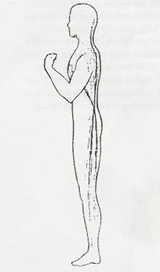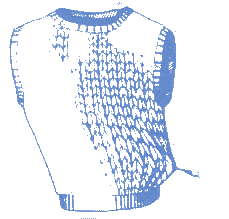Myofascial Release

Myofascial Release: Also referred to as MFR, this procedure to designed to stretch and reflexly release patterned soft tissue and joint-related restrictions.
Example of Technique:
Physician twists, shears, and compresses joints while simultaneously feeling tissue and joints for shifting tightness and looseness.
Reason for Applying:
Applied to patients suffering from muscle tightness.
Effect of Treatment:
Joint-related movements are assessed and treated simultaneously. Joint and muscle movements are improved and pain is decreased.
Key Benefits
- Reduced pain
- Improved mobility
- Sense of wholeness
- Understanding MFR
Some examples:
Source: Carol J. Manheim, MS, PT, LPC
BACK STRAIN, chronic back pain, low back pain, thoracic back pain
Persistent, recurrent back pain can cause or be the result of asymmetrical soft tissue tension that does not respond to active stretching by the patient. Active myofascial trigger points can be the stimuli for continued muscle spasm. The pain–spasm cycle further distorts the patient’s posture and causes additional soft tissue injury. Using Focused Myofascial Stretching, the physical therapist can neutralize the trigger points and equalize the soft tissue tension, decreasing the postural asymmetries.
CARPAL TUNNEL SYMPTOMS
Anterior chest wall tightness, forward head posture and active myofascial trigger points can cause carpal tunnel symptoms. Myofascial Stretching of the anterior chest wall decreases the asymmetrical pull that causes protraction of the scapulae and contributes to the forward head posture. Myofascial Trigger Points in the pectoralis minor and the forearm can be neutralized at the same time. A home exercise program using Myofascial Release techniques is given as soon as the initial symptoms decrease by 50%. Focused Myofascial Stretching can also break the adhesions that form between irritated and inflamed tendons.
CHRONIC CERVICAL STRAIN, chronic cervical pain
Persistent cervical pain can cause or be the result of asymmetrical soft tissue tension that does not respond to active stretching by the patient. Active myofascial trigger points can cause radiating pain into the face, jaw, skull, shoulders, upper back and down the arms. Chronic cervical strain and forward head posture can cause vertigo and balance dysfunction. All of these problems must be addressed in a comprehensive physical therapy treatment program.
COMPLEX PAIN COMPLAINTS
When a patient does not completely recover from an initial injury, inefficient accommodation to the residual restriction of movement causes additional asymmetrical soft tissue stresses. Chronically irritated and inflamed tissues develop adhesions that further limit efficient movement. As this feedback loop continues, the patient’s pain complaint becomes diffuse and global. Pain causes fatigue, depression and impaired sleep.
Myofascial Release can address all of these problems as part of a comprehensive physical therapy treatment program. As a direct, "hands-on" treatment, Myofascial Release reverses the physical withdrawal behavior of many patients who are in chronic pain. As the asymmetrical soft tissue stresses decrease, the feedback loop is interrupted. Sleep patterns improve and overall pain decreases. Gradually, the layers of injury are peeled away like an onion until only the sequelae from the original injury are present and can be treated.
More about MFR
Myofascial release (MFR) and soft tissue techniques are similar to deep massage, but the hands of the manipulator do not slide along the skin surface. The goal is to stretch muscles and fascia to reduce tension. Most commonly, traction is applied to the long and transverse axis of muscles during soft tissue stretching and kneading. Deep tissue inhibition can also be used in conjunction to reduce somatic dysfunctions. More involved MFR techniques entail operator monitoring and adjusting tension along fascial and muscular planes. Soft tissue and myofascial techniques can also be adapted to promote venous and lymphatic drainage.
Source: Carol J. Manheim, MS, PT, LPC
How change occurs in our body and how we heal.
Myofascial Release is a whole body treatment method that recognizes that tightness and restrictions in one area of the body affects the entire body. Restrictions cause uneven stresses in the body and inefficient movement patterns. Our bodies maintain the most energy-efficient posture and movement patterns available to us. When a more efficient posture can be achieved using Myofascial Release, energy increases and pain decreases.
Our brains recognize our current posture, muscle tension, and movement patterns as being "normal" -- not necessarily as efficient or pain free. Myofascial Release requires re-education of the central nervous system to accept the new posture and muscle tension as better and less painful.
During the initial phase of treatment, the patient's brain says, "This isn't me! This feels weird. I'm not going to do this," and the changes achieved in a treatment session do not last. As treatment progresses, however, the patient's brain begins to recognize the new posture and lessened muscle tension as being less energy expensive and less painful. At that point, the changes achieved during treatment last longer. At the end stage of treatment, the brain recognizes the new posture and muscle tension as better, less painful and more energy efficient. When that occurs, change is maintained, the old posture is recognized as inefficient and painful while the new posture is more efficient and not (or less) painful
Anatomy of Fascia
Fascia (also called “connective tissue”) is a body system to which little attention has been paid to in the past. It is the tough, white membrane which we sometimes remove from meat before cooking. It is very strong, being able to withstand and exert a force of 2000 pounds per square inch.The fascial system extends from the toes to the top of the head, throughout the body, in a continuous spider web-like fashion. It surrounds all the tissues and organs of the body right down to a cellular level. Without the fascia, our body would crumple up into a pile on the floor.
The majority of the body’s fascia is oriented vertically. There are however four major crosswise (or transverse) planes which are extremely dense. These are the pelvic diaphragm, respiratory diaphragm, thoracic inlet and the cranial base. Sometimes all four planes can become effected over time as restrictions entwine themselves through the body, gradually torquing and twisting outwards. The dura mater (the connective tissue surrounding the brain and spinal cord) is also fascia. All of these regions can be treated with MFR techniques to free restrictions and restore equilibrium.

"Fascia Man"
A problem in the back can pull on all the connected fascia and cause symptoms in distant areas.
When Fascia is Injured
Because our entire body is interconnected, when the fascia becomes compromised following any injury (such as surgery, birth, trauma, disease, inflammation, etc.) it can put tension on adjacent pain-sensitive structures, as well as creating a drag on distant areas. Long after the original complaint, some patients have bizarre symptoms that we can now identify as being caused by the fascial system—symptoms like burning, tingling, pulling, cramping, poor posture, difficulty breathing, and cranial symptoms. A visual analogy may be when you pull on your sweater at the bottom you can feel it “dragging” and tightening up around your neck and shoulders.

The “Sweater Effect”: any pulling in one place can create drag in distant areas.
We slowly tighten, losing our flexibility and spontaneity of motion, and setting ourselves up for more trauma and pain as we are pulled out of our three-dimensional orientation with gravity.
References
ACOFP website
0 Comments:
Post a Comment
<< Home